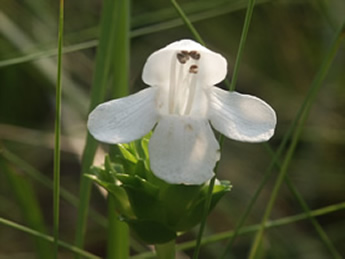|
Tate’s Hell State Forest
Tate's Hell State Forest is 202,000 acres (819 km2) of land in Franklin and Liberty counties in Florida. The forest is located near Carrabelle off US 98 along the Gulf coast and on St. James Island. At one time, Tate's Hell supported at least 12 major habitats including: wet flatwoods, wet prairie, seepage slope, baygall, floodplain forest, floodplain swamp, basin swamp, upland hardwood forest, sandhill, pine ridges, dense titi swamp thickets and scrub. Tate's Hell State Forest is an important hydrologic area and includes a section of the New River (Florida Panhandle). The park's watershed provides fresh water into the Apalachicola Bay, the Carrabelle River and the Ochlockonee River. During a 40-year period of private ownership prior to the state's acquisition in 1994, over of forest roads and ditches were constructed on the property to accommodate intensive commercial forest management operations. Most of the area was planted with pine monoculture and the drainage ca ... [...More Info...] [...Related Items...] OR: [Wikipedia] [Google] [Baidu] |
Carrabelle, Florida
Carrabelle is a city in Franklin County along Florida's Panhandle, United States. It is located east of Apalachicola at the mouth of the Carrabelle River on the Gulf of Mexico. The population was 2,606 as of the 2020 census. History In 1528, the first Spanish expedition of Pánfilo de Narváez passed through the area on its way from Tampa Bay to the Rio Grande. From the late 17th century through early 18th century, a few passages referring to the area are mentioned. Carrabelle, Dog Island, and St. George Island served as points to stage raids on local ports, as well as San Marcos de Apalache in 1677 and 1682. In 1876, explorer Nathaniel Holmes Bishop of Medford, Massachusetts, navigated the Crooked River through the lowlands east to the Ochlockonee River. In 1877, Oliver Hudson Kelley from Massachusetts founded the town and named it "Rio Carrabella", after his niece, Caroline Hall. The following year, the first U.S. post office was established with its address as R ... [...More Info...] [...Related Items...] OR: [Wikipedia] [Google] [Baidu] |
Carrabelle River
Carrabelle River is located in Carrabelle, Florida, and flows into St. George Sound in Apalachicola Bay and the Gulf of Mexico The Gulf of Mexico () is an oceanic basin and a marginal sea of the Atlantic Ocean, mostly surrounded by the North American continent. It is bounded on the northeast, north, and northwest by the Gulf Coast of the United States; on the southw ....Herb HilleA quaint Florida getaway The small Panhandle town of Carrabelle remains a quaint slice of Old Florida. September 14, 2008 Tampa Bay Times The area has been a base for commercial fishermen. It is home to a river festival. It is crossed by the Carrabelle River Bridge on U.S. Route 98. Upstream, the Carrabelle forks into the New River and Crooked River. References Rivers of Franklin County, Florida Rivers of Florida {{Florida-river-stub ... [...More Info...] [...Related Items...] OR: [Wikipedia] [Google] [Baidu] |
Rhexia Parviflora
''Rhexia'' is a genus of flowering plants in the family Melastomataceae. ''Rhexia'' species are commonly called "meadow beauty" and 11 to 13 species of ''Rhexia'' have been recognized depending on different taxonomic treatments. Distribution Unlike other members of the same family showing pantropical distribution, ''Rhexia'' is mainly distributed in temperate region of southeastern part of North America; from Nova Scotia to Florida and the West Indies (Cuba, Hispaniola, and Puerto Rico) and west to eastern Texas. The species of ''Rhexia'' are frequently found in wet meadows, coastal plain marshes, sandy wetlands and lake edges, pine woods, and road-side swales. Most ''Rhexia'' species successfully establish on open areas disturbed by recurrent burning or reclamation. Description ''Rhexia'' species are herbaceous perennials. Opposite leaves are simple, ovate to lanceolate and have the typical acrodromous venation (prominent arcuate nerves) characteristic of the Melastomatace ... [...More Info...] [...Related Items...] OR: [Wikipedia] [Google] [Baidu] |

